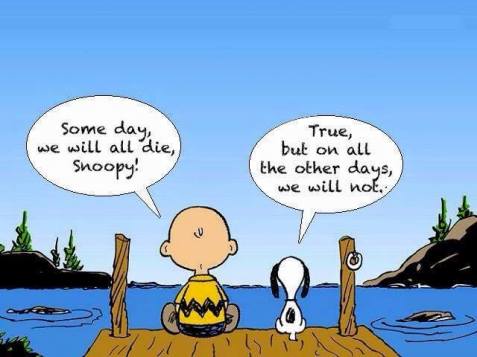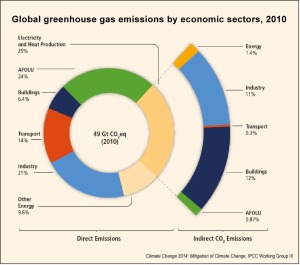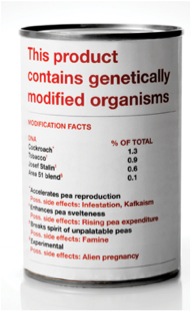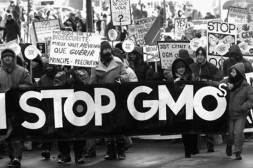15 years ago, we started our first homestead/farming/ranching venture. Starting from the knowledge acquired through the years of just having a home garden and a few chickens, we bravely struck out.
Over time we developed THE HERITAGE FARM…
In our culture we seem to think we must know all the answers before we are comfortable making a significant change. NOPE! not us… you don’t even KNOW the questions to ask, until you are in the middle of a new venture. While gathering info ahead of time is indeed important you just can’t have all the “right” answers all the time. Part of the fun is figuring out solutions for different problems that crop up.
Most important, I think, is to continue learning; to explore new methods, to listen to other ideas, to explore why something does or does not work.
We like to have a tried and true method to rely on but history is not always the best teacher. Well hold that thought, it actually can be an excellent teacher of what has been done but has NOT stood the test of time (or test of quality, test of sustainability). Certain fixes look good in the short-term, but often have unintended side effects that create a disaster.
Internet technology has given every man access to knowledge that used to be held only by those in research universities. Today anyone can “google” or “youtube” information. Our advantage over the past is tremendous. The everyday man can take advantage of information, results of research, actual trials that was once almost unattainable.
Industrial agriculture has created some disastrous results. Now that we have basically run out of room to move on to new territory to utilize, we are confronted with the long-term results of our past methods: dead dirt, sick plants, nutrient-poor food, loss of topsoil measured in tens of feet, chemical contamination of our water & soils. Out of those problems has come new research that has opened whole windows of understanding the dynamics of an ecological system that IS sustainable… and avoids the pitfalls of industrial ag.
When I say “Back to Farm Life… a do over” I mean it’s a learning process. Each step of that journey we learn something new. If we waited until we had all the answers, we would still be waiting to get started! Paralysis by Analysis would be an appropriate term.
This will be our 3rd significant farming/homestead venture and I can see how all the pieces are falling into place. How the things we used to do have morphed from the traditional into a sustainable model. And it’s exciting to see; to understand the system nature has created over millions of years, we are learning how to work with it instead of butting heads.
I call it a Full-cycle Systems Approach: It’s all part of the soil succession ecological system that comes into play. First, weeds; then grasses followed by shrubs, followed by trees. The soil microbial system evolves along with this, first being primarily bacterial based transitioning to fungal. Healthy veggies will have a much higher load of bacterial microbes, while trees will have mycorrhizae microbes (fungal). There is a synergistic relationship with the microbiotic world and plant roots. The roots trade sugars, that the plants produce through photosynthesis, for nutrients the micro-organisms breakdown into a form the plants can use.
Our job on the farm is to provide a healthy environment for the microbes to be able to do their job. Healthy plants that get the nutrients they need are NOT attractive to pests and are resistant to diseases. Industrial fertilizers tend to be too harsh and actually kill off the very microbes needed for quality growth. The name of the game is NOT the fastest growth, but healthy growth. Too fast tends to be too weak.

Our Next “do over”…
Moving onto our exciting adventure, on the farm. Shortly after purchasing a 4 1/2 acre parcel of land (it took me three, yes, three years to find what I was looking for) we were able to put our well in. Despite the ongoing drought in California we were totally blessed to get 100 gpm output. (Anything above 10 pgm would have been good; 35 gpm awesome).
This meant we would have good quantity of water to actually farm with. Not only that, the water tests came back with”outstanding” quality. Many wells have too much of this or that to make it palatable for consumption: human, animal or plant. Our well is down below a clay layer that seals off the products of industrial life from leaching down into the geologic water.
Tragically… well I thought it was a tragedy because it delayed our work on building the farm. Instead we had to move away.
Currently, all that was on the property was an old ricky barn, an old chicken house, and the debris from a collapsed barn. Instead of being able to start work on building a house, Jim found himself out of work! He had to change jobs. With only 2 weeks notice we had to move to San Diego; from farm to city.
City Life, a step back
The few positives of the move were that we had to wait anyway on septic hoops to jump through (required testing) that ended up taking two years to complete BECAUSE of the drought. If you don’t have enough rain it’s pretty hard to document that the soil drains properly. I was bummed. We were living in San Diego (talk about high density living) amid the a world seemly completely out of touch farming life.
There was a positive, at least in San Diego, we would get to spend some time with a daughter and meet her “intended”. We thought it would just be until we got the septic testing completed (1 3/4 years) but we were delayed. I was chomping at the bit to get back home, in Cotati, but it did not happen. We ended up having to stay another year.
Did I mention positives? Yep…some pretty big ones. One, we had designed a grannie unit (which was limited to 840 sq ft) along with the farmhouse but the housing crunch is so bad in the SF Bay Area – and definitely in Sonoma County (rent rates up 40% in 3 years)…in this last year they changed the limit. An accessory unit could be 1000 sq ft, potentially up to 1200 sq ft. The new square footage allotment would be a much better fit for us.
In the meantime, our daughter & new son-in-law, were expecting their first child. We would get to be close at hand and get to spend some time with a new grandchild. An unexpected pleasure! Enough, most definitely to counter the frustration of city life for another year.
Control? what control…
It continually amazes me how life progresses along certain path, despite what we “want” and ends up with a better outcome. I’m learning to “work toward a goal” but don’t get too hung up on the time frame. When it all comes together, it will. All the stress in the world doesn’t change anything; better to just enjoy the ride. Hard ’cause we SO like to be “in control”.
So Daughter, Son-in-Law, grandson move to the Swiss Alps (where his family is from) during the summer, this year. We head up to Cotati to get some work done on the farm, preparing for septic, thinking it would be the next year before being able to move back.
While there, Jim get’s a call; would he be interested in interviewing for a software engineering job, in San Francisco. “HECK, YEAH”! He’s off the backhoe & tractor, scrounging around for some decent looking clean clothes, for an interview. They offer him the job the NEXT DAY. Bamm, he starts work in SF, two weeks later.
We are back “home”.
Overdrive
Building a pump house, setting up corrals for the two half-lingers draft horses, cleaning out the pond area, setting up drainage for when the winter rains come, planting trees, building garden beds, prepping the pastures for green manure cover crops to enrich the soils. Running water lines, putting in a small solar system, getting a small flock of chickens that free-range and provide us with the most awesome eggs. You know, just some odds & ends to take care of. The first 8 weeks back on the farm.
I am in awe of my husband. He gets up at 4:45 to catch the commuter bus into SF, works a full day; he get’s home after dark (6:30pm)… 5 days a week and then works non-stop on the weekend working his magic turning this place into our homestead.
He plans a plain ol’ funky shed to house the well head, pump, and electronics. I ask for a mini cottage, with a porch and garden in front of it, with a tiny pond. Voila! He starts creating it.
Each incremental step, is a piece of love, in creation. The soil (sediment from the base of the pond) he moves over to create the garden area is so rich & dark; it calls to be planted. Our winters tend to be very mild (some frost) so while the above ground parts of the plant may be dormant, the roots are alive and well, creating a support system that will be able to handle the spring growth without missing a beat.
Building the Base
I’ve already been down to the seed store to buy wild flowers in bulk, and organic cover crop mix for Jim to lay down. The cover crop he will plow into the soil in the spring, and then plant a rich variety of pasture mix. I’ve coaxed him into reserving an area for fava beans, alfalfa, and barley.
We had a tiny bit of rain a few weeks ago (that helped put out the fires that were still burning in the range between us (Sonoma and Napa Valley). It also helped germinate the weed seeds. Two days ago we had good steady rain (over an inch) which has primed the soil for good growth. Jim completed the turning of the soil, to break up the compacted areas and till in the weeds, with 2 days of dry. Now he’ll plant the seeds so that the rain we expecting all day tomorrow, will prime the pump. Germinate those seeds and get the cover crops going before the weeds can kick in.
If we had irrigation we would have watered to germinate the weeds, let them grow a bit, then turn them over, returning their nutrient load to the upper layers of the soil. Do that 2 or 3 times, to decrease the weed load still in the soil seed bank. But we think the cover crop we selected will outcompete the weeds. It doesn’t have to be 100%… even weeds have some positives.
Do you know WHAT a weed is?
A plant growing where you don’t want it to. Traditional weeds actually have some significant properties that are important to the soil. Plants that we consider weeds tell you a lot about the nutrient quality of the soil. The roots of those plants tend to grow well in nutrient deficient soil because they go down deep where nutrients are. When their root systems die they release those nutrients back into the upper layers of the soil where the microbes can utilize them. They aerate the soil while doing this. That is the point of us planting a green manure cover crop and then tilling it back into the soil in the spring. To build the food base for the microbes to use, to feed the plants we want to grow.
Check the research done by Dr. Elaine Ingham on the Soil Food Web;
an incredible resource. 
I’ll say it again because it is so important. It’s all part of the soil succession ecological system in play.
- First, weeds,
- then grasses,
- followed by shrubs,
- followed by trees.
The soil microbial system evolves along with this, first being primarily bacterial based transitioning to fungal.
Healthy veggies will have a much higher load of bacterial microbes, while trees will have mycorrhizae microbes (fungal).
There is a synergistic relationship with the microbiotic world and plant roots. The roots trade sugars, that the plants produce through photosynthesis, for nutrients the micro-organisms breakdown into a form the plants can use.
Again, our job on the farm is to provide a healthy environment for the microbes to be able to do their job. Healthy plants that get the nutrients they need are NOT attractive to pests and are resistant to diseases. No need to add toxic chemicals to the soil or plants.
We take time to inoculate the soil with the base microbes that create a healthy system. And then we let THEM do the real work. I’ll be sitting on my front porch glorying in the view of the garden, sometime next year.
It starts with a vision… and a willingness to learn.












